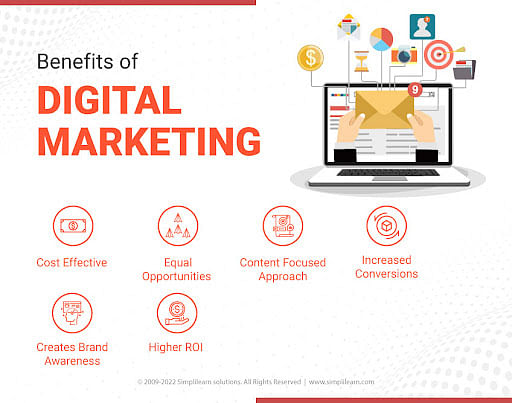Boost Your Brand Name with The Ad Firm Web Design: Where Advancement Meets Performance
Enhance User Experience and Drive Traffic With Responsive Website Design
In today's digital landscape, where users are accessing sites from a multitude of devices, receptive website design has ended up being more vital than ever before. With its capacity to adapt and perfectly adapt to different display sizes, responsive design not only enhances user experience but likewise drives traffic to your internet site. Why is this design technique so essential? Just how does it enhance customer involvement and boost website traffic? In this conversation, we will explore the crucial elements of effective receptive layout, dive into the finest techniques for its application, and discover the tricks to enhancing customer experience while driving even more web traffic to your web site.
Why Responsive Website Design Issues
Responsive web style is a vital element of contemporary internet advancement as a result of its ability to make sure ideal customer experience across various devices and display sizes. With the proliferation of mobile phones, tablets, and other smart phones, it has become vital for sites to adapt and give smooth functionality despite the tool being made use of.
The main reason that receptive web style issues is that it enables individuals to have a consistent and enjoyable browsing experience, no matter the gadget they are using. A responsive web site instantly adjusts its layout, content, and layout components to fit the screen size and resolution of the device, guaranteeing that individuals can conveniently communicate and navigate with the web site with no inconvenience or disappointment.
Additionally, responsive web layout also plays a substantial role in seo (SEARCH ENGINE OPTIMIZATION) Internet search engine, such as Google, focus on internet sites that are mobile-friendly and receptive in their search results page. By incorporating responsive design concepts, websites can enhance their presence and position, leading to increased natural traffic and potential clients.

Boosting Individual Engagement With Responsive Layout
Maximizing user engagement is a key goal of responsive style, as it guarantees that individuals can easily access and communicate with web site web content on any type of gadget. With the boosting use tablets and smart devices, it is crucial for sites to adjust to various screen dimensions and resolutions. Responsive design enables internet sites to immediately change their design and content to supply a smooth individual experience throughout devices.
One of the primary means receptive layout boosts customer involvement is by decreasing load times. With a responsive website, customers do not have to await different mobile variations to tons, leading to much faster access to web content. This enhanced rate results in higher customer complete satisfaction and encourages them to spend more time on the site.
Furthermore, receptive layout boosts user interaction by enhancing navigating and customer interface (The Ad Firm Web Design). When a site is designed responsively, food selections and buttons are enhanced for touch interactions, making it easier for customers to browse and interact with the site on their mobile gadgets. This intuitive and easy to use experience maintains customers involved and encourages them to check out even more of the web site
Additionally, receptive style enables much better material exposure and readability. By adapting the format and font style dimensions to different tools, responsive sites make certain that users can easily understand the content and read. This improves individual involvement by reducing the requirement for scrolling or zooming to check out the message.
Boosting Site Web Traffic With Responsive Web Style
With the expanding popularity of mobile phones, having a web site that is responsive to various display sizes and resolutions is necessary for driving raised traffic. In today's digital landscape, customers are accessing internet sites from a range of gadgets such as smart devices, tablets, and home computer. Each of these devices has different screen dimensions and resolutions, and if your site is not designed to adjust to these variants, it can bring about a poor individual experience and a loss of prospective traffic.
Responsive website design ensures that your internet site looks and works efficiently throughout all tools. By utilizing versatile grids, fluid images, and media queries, receptive layout allows your internet site to instantly adjust its navigation, web content, and design to fit any screen dimension. This indicates that users will certainly have a smooth browsing experience no matter whether they are making use of a large desktop or a little mobile phone computer.
Key Aspects of Effective Responsive Style
Reliable receptive layout includes a number of crucial elements that make sure a smooth user experience throughout different devices. This allows material to be shown in a readable and visually enticing way on any type of device.
One more essential component is media questions. These allow developers to use various styles and designs based upon the characteristics of the user's gadget, such as display dimension and alignment. By using media queries, developers can enhance the discussion of content for each gadget, guaranteeing that it is quickly obtainable and understandable.
Receptive pictures are also vital in effective receptive layout. Photos that are as well huge can reduce page lots times on mobile phones, while photos that are as well tiny might appear pixelated on larger displays. By using strategies such as receptive picture resizing and careless loading, designers can make sure that images are appropriately sized and maximized for every gadget.
Lastly, efficient receptive design involves a mobile-first method. This suggests focusing on and creating web content for mobile phones initially, and after that enhancing the layout and broadening for bigger displays. This technique ensures that the most important material is quickly accessible on smaller sized displays, while still supplying a rich experience on larger gadgets.
Best Practices for Implementing Responsive Internet Layout
Implementing responsive website design calls for mindful consideration of numerous best techniques to ensure an optimum individual experience across various tools. Here are some vital best techniques to follow when executing receptive website design.
First of all, it is vital to prioritize mobile users. With check my source the raising supremacy of mobile gadgets, designing for mobile-first has actually ended up being essential. Begin deliberately for smaller sized screens and then progressively enhance the format for bigger screens.

An additional vital best method is to optimize images for different screen resolutions. Huge photos can reduce the packing time of your web site, particularly on mobile devices with slower connections. Usage responsive images that can be resized based upon the device's display resolution to enhance performance.
Additionally, examination your site on different devices and display dimensions to make certain a seamless and consistent experience. There are various testing tools offered that can assist you recognize any type of issues and make required adjustments.
Finally, focus on usability and availability. Make certain that your internet site is simple to navigate, with clear and succinct web content. See to it that your internet site is easily accessible to people with handicaps and complies with accessibility standards.
Final Thought
To conclude, receptive website design plays an important function in boosting user experience and driving website traffic to internet sites. By taking on responsive layout principles, websites can make certain look at more info optimum checking out experiences throughout various devices, leading to raised customer involvement (Web Design). Furthermore, responsive style can additionally add to greater internet site traffic as it improves search engine rankings and promotes very easy sharing of content. Organizations should focus on executing the vital components visit their website and best methods of responsive style to efficiently fulfill the demands of modern-day individuals.
Optimizing individual interaction is an essential objective of responsive style, as it guarantees that individuals can conveniently gain access to and communicate with site material on any kind of gadget. Responsive style enables internet sites to automatically readjust their layout and content to provide a smooth user experience throughout gadgets.
In addition, responsive style improves user interaction by boosting navigation and individual interface.Receptive pictures are additionally important in reliable receptive style. By adopting receptive design principles, sites can make certain optimal checking out experiences across various tools, leading to raised user engagement.